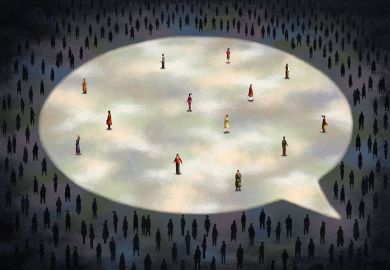Why, asks the Mad Hatter, is a raven like a writing desk? Alice gives up; worse; the Mad Hatter has not the slightest idea, worse still, neither has Lewis Carroll. Various answers have been proposed (Poe wrote on both), but it is an excellent working definition of nonsense: a riddle without an answer, a hybrid of forms.
The Origins of English Nonsense is a hybrid itself: half-monograph, half-anthology. Noel Malcolm claims in his extended introduction that this is both the first study of 17th-century nonsense poems, and the first collection (it contains 40 lightly edited examples). He argues that English nonsense verse was not invented in the 19th century, but developed much earlier from European sources as a specific cultural-historical product.
Malcolm's scholarship is impressively wide ranging: a brief history of nonsense poetry in medieval and renaissance Europe; surveys of Elizabethan drama and satire and the literary influences of Marlowe, Marston, and Nashe; and examples of the "plumbeous cerebrosities" of fustian speech, aureate diction and inkhorn terms. But despite this broad canvas he focuses on two writers he claims are the original English nonsense poets: John Hoskyns and John Taylor.
Hoskyns invented English nonsense verse in 1611 precisely (one expects more: a date, a time of day) as a mock-panegyric on a travel book, in the company of various wits producing similar barbaric gibberish or learned logophilia larded with footnotes. With almost heroic temerity, Hoskyns wrote not another line of nonsense. He was succeeded in this career by Taylor, a Thames bargeman (the "Water Poet"). Taylor was a profligate writer of hackery and an obsessive imitator of Hoskyns and his crew. Nonsense became characteristic of his style and so its sudden demise in the second half of the century might simply be because it became overly identified with a single author. Indeed, most of the pieces in the second half of the book are Taylor's.
Taylor's nonsense verse begins as glossolalia and spewed-up classicism, before he discovers the innate hilarity of animated food. Thereafter follows a blizzard of lobsters and puddings, blowing under howling and wagging dogstars - a monstrous surfeit of mincing and galumphing nuncheons. Food, particularly seafood, seems incapable of staying on the plate but is up and about performing all manner of light domestic duties. The very land becomes a seaside dish: Is Shooters-hill turn'd to an Oyster pie, Or may a May-pole be a butterd Plaice?
But it is disappointing that within Malcolm's gallimaufry, pickle, hodgepodge, salad, satura, hash, farrago, mess, salmagundi, etc. that "Cock Lorrel", for example, does not appear in its version describing the diabolical contests of cannibal trenchermen and their magnificent flatulence. It is, unfortunately, all cleaned up in Martin Parker's ballad "A Bill of Fare", and this version merely recounts an extravagantly greedy feast.
Also omitted are Bedlamite verses. Oddly, Malcolm discards these as a species of boasting poem. But there are examples that include both barking-mad dogstars and daft dinners: the man in the moone drinkes Clarret eates pouthered beeffe turnipp & Carrett a cup of old Maligo sacke will ffire the bush att his backe On the other hand, Malcolm does include several pieces not strictly nonsense as examples of fustian, gibberish, mock-prescriptions, medleys and catches, and potty, if earnest, attempts to make mnemonic verses for children, although this last category is problematic. The mad linguisticians Joseph Brookesbank and George Dalgarno appear on the grounds that their poetic balderdash grew straight out of their preposterous theories. They were not deliberate nonsense writers.
Although Malcolm avoids decoding nonsense, and resists turning it into allegory or parody or just bad poetry, it is not simply a coincidence of literary and cultural influences that produced the genre of nonsense verse in the 17th century. Like all verse at this time, nonsense verse was political. As Elizabeth Sewell has suggested, nonsense is concerned with order. Taylor was a royalist balladeer and propagandist: a political writer who fled London, stayed at Oxford, wrote elegies for the king, and was eventually arrested. He referred to the rebellion in his verse, and his nonsense seems like a way of both quelling and mocking the livid threats of sectarian radicals. It was also part of a developing royalist ideology of the ludic. The sheer fun of the games and jollifications in Taylor's "The Essence of Nonsence upon Sence" embodied a royalist spirit opposed to Puritan fast days, sabbatarianism, and the suppression of traditional sports. If prancing around a maypole was a political act, so, too, was writing ridiculous nonsense. It was a safe place to confine the chaotic glossolalia of the Ranters, a necessary gap in royalist hermeneutics that was an aid to making sense.
Perhaps at the root of Taylor's growing passion for nonsense was the profoundly traumatic execution of Charles I. The only explanation for the crimes of the past was that they were nonsensical. Rather like Alice's reaction to "Jabberwocky", much of Taylor's verse seems to leave the reader feeling empty despite the gourmandising. There is an inexplicable sense of loss: "Somehow it seems to fill my head with ideas - only I don't exactly know what they are! However, somebody killed something: that's clear, at any rate." The riddle of nonsense has no answer.
Nick Groom is lecturer in English, University of Exeter.
The Origins of English Nonsense
Author - Noel Malcolm
ISBN - 0 00 2558 0
Publisher - HarperCollins
Price - £18.00
Pages - 329



